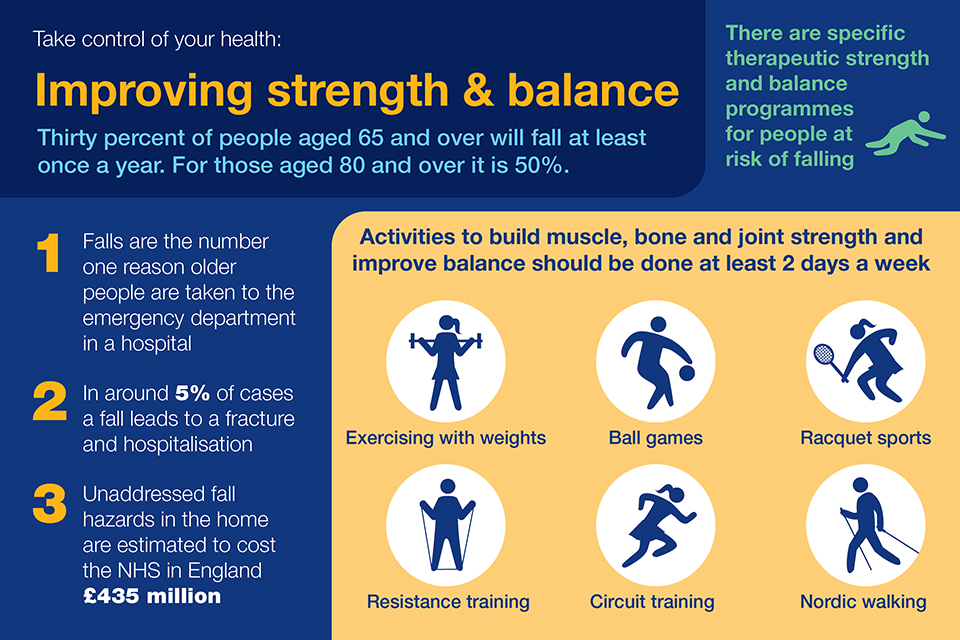Some Known Incorrect Statements About Dementia Fall Risk
Table of ContentsDementia Fall Risk for DummiesDementia Fall Risk Fundamentals ExplainedIndicators on Dementia Fall Risk You Need To KnowSee This Report on Dementia Fall Risk
A loss danger evaluation checks to see just how likely it is that you will drop. It is primarily done for older adults. The analysis usually includes: This includes a collection of inquiries about your general wellness and if you've had previous falls or issues with equilibrium, standing, and/or strolling. These devices evaluate your stamina, equilibrium, and stride (the way you walk).Interventions are recommendations that might minimize your danger of falling. STEADI consists of 3 steps: you for your threat of falling for your risk factors that can be boosted to attempt to stop falls (for instance, balance issues, impaired vision) to decrease your threat of falling by using efficient approaches (for example, providing education and learning and resources), you may be asked a number of questions consisting of: Have you fallen in the past year? Are you stressed regarding dropping?
You'll rest down once again. Your service provider will certainly examine the length of time it takes you to do this. If it takes you 12 seconds or more, it might mean you go to higher threat for a fall. This test checks toughness and balance. You'll rest in a chair with your arms crossed over your upper body.
Relocate one foot halfway forward, so the instep is touching the huge toe of your various other foot. Relocate one foot fully in front of the various other, so the toes are touching the heel of your other foot.
The Facts About Dementia Fall Risk Uncovered
The majority of falls take place as an outcome of multiple adding factors; consequently, taking care of the danger of falling begins with determining the variables that add to drop danger - Dementia Fall Risk. Several of one of the most relevant risk variables consist of: History of previous fallsChronic clinical conditionsAcute illnessImpaired gait and equilibrium, reduced extremity weaknessCognitive impairmentChanges in visionCertain risky drugs and polypharmacyEnvironmental factors can also enhance the risk for falls, including: Poor lightingUneven or harmed flooringWet or unsafe floorsMissing or harmed handrails and get hold of barsDamaged or incorrectly fitted devices, such as beds, mobility devices, or walkersImproper use of assistive devicesInadequate supervision of individuals residing in the NF, consisting of those who exhibit hostile behaviorsA effective autumn threat monitoring program requires a complete scientific evaluation, with input from all members of the interdisciplinary group

The care strategy ought to likewise include interventions that are system-based, such as those that the original source promote a risk-free setting (suitable illumination, handrails, grab bars, and so on). The efficiency of the treatments ought to be examined periodically, and the care plan changed as required to show changes in the autumn danger evaluation. Implementing an autumn risk administration system utilizing evidence-based ideal method can reduce the prevalence of drops in the NF, while limiting the potential for fall-related injuries.
Not known Incorrect Statements About Dementia Fall Risk
The AGS/BGS guideline recommends screening all grownups matured 65 years and older for autumn danger yearly. This testing contains asking people whether they have actually fallen 2 or more times in the previous year or looked for medical interest for an autumn, or, if they have not dropped, whether they really feel unsteady when strolling.
People who have fallen once without injury needs to have their balance and stride assessed; those with stride or equilibrium problems ought to get added evaluation. A history of 1 loss without injury and without gait or equilibrium troubles does not require more evaluation beyond ongoing annual autumn danger screening. Dementia Fall Risk. A loss danger assessment is needed as part of the Welcome to Medicare assessment

How Dementia Fall Risk can Save You Time, Stress, and Money.
Recording a falls history is one of the quality indications for loss prevention and administration. copyright medications in particular are independent predictors of falls.
Postural my company hypotension can usually be reduced by minimizing the dosage of blood pressurelowering medicines and/or quiting medicines that have orthostatic hypotension as a side impact. Use above-the-knee assistance hose and copulating the head of the bed raised may likewise reduce postural reductions in high blood pressure. The advisable components of a fall-focused physical exam are displayed in Box 1.

A TUG time higher than or equal to 12 secs suggests high fall risk. Being unable to stand up from a chair of knee height without utilizing one's arms shows raised loss threat.